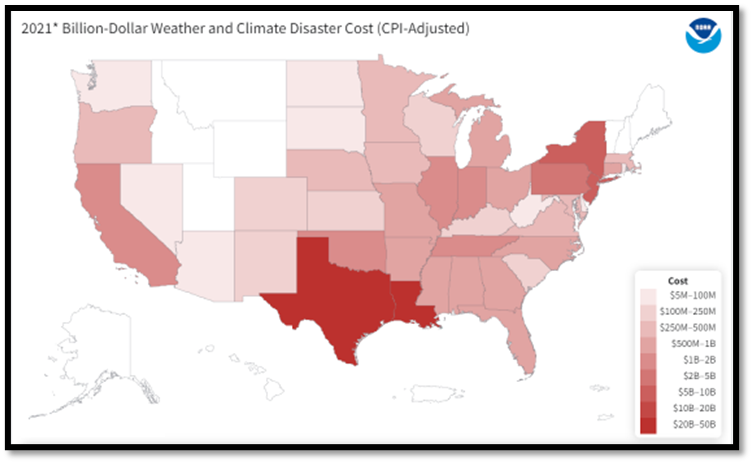
Disaster Management Manual
A manual for practitioners and decision makers!

Disaster Management Manual
A manual for practitioners and decision makers!
Community team building results in a defined, fluid outcome and is the basis for managing risk. ”Disasters can have significant and depleting immediate and long-lasting impacts on government budgets and finances, and these impacts may be difficult, if not impossible, to recover from. The National Oceanic and Atmospheric Administration (NOAA) National Centers for Environmental Information (NCEI, 2019) estimates that the nation (U.S.) has experienced 254 weather and climate disasters from 1980 to the present for which total costs exceed $1.7 trillion. The following map shows United States weather and disaster costs from 2021: 1

A key element in risk management from New Zealand’s Transport Agency (NZTA) is called a Portfolio Risk Assessment (PRA). ‘This assessment results in a database identifying and rating risks to the land transport system. It is not a detailed risk assessment; but is a practical high-level assessment that enables Waka Kotahi to better prioritize resilience risks and develop response strategies. The portfolio risk assessment methodology adopts a Likelihood and Consequence approach to assess risk as outlined in International Organization for Standardization (ISO):31000 Risk Management Principles and Guidelines (ISO, 2009).’ 2
‘Shock events such as earthquake, tsunami, rock-fall or storm-induced flooding and landslip require addressing slightly differently to that of climate-related hazards such as coastal inundation, coastal erosion and groundwater rise (influenced by sea-level rise, refer section 3.2). This PRA approach uses combined likelihood and consequence parameters that influence the level of risk.’ 3
